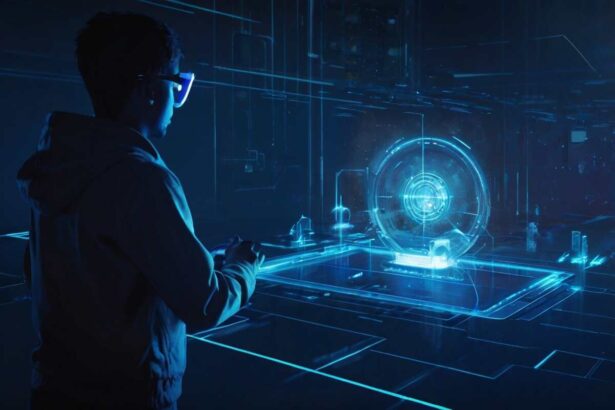Web3 came into existence in the cryptocurrency industry with the rise of blockchain technology, which provides security and transparency to store and track digital assets. It also developed a smart contract that allows for decentralization and engages transactions automatically. It removes the need for intermediaries in WEB3 including games, finance, and social media.
The gaming industry experienced an instant change at the turn of modern blockchain technology that engages the potential environment. Web3 game, a creative concept is transforming how users engage with games by introducing the play-to-earn (P2E) model and setting off the development of in-game economies to exceptional heights.
However, Web3 in cryptocurrency is a digital asset or value added to the development of a decentralized internet. It’s a new wave of cryptocurrency that focuses on making the decentralized vision of Web3 a reality. Moreover, it’s referred to as the third generation of the internet. It aims to remove control from large industries or corporations and allow users to operate with full ownership of the decentralized digital assets.
Understanding Web3 And The Crypto Games
We need to understand that Web3 is the third (3rd) generation of the server website, where devices are connected in a decentralized network rather than depending on a server-based database. And this new server website comes with more security, privacy and the best connection you ever wanted.
The concept of Web3 especially in crypto games offers an innovative perspective for users to participate in games through decentralized approaches.
Its Key Components
Let’s list out some of the key components of the Web3 in the cryptocurrency games:
Non-Fungible Tokens (NFTs): These are the types of unique cryptocurrency assets that are used to create and own a digital asset. They are important on how it will be valuable to create and exchange on web3.0.
Decentralized Applications (DApps): These applications are built on a decentralized blockchain. It leverages the benefits of blockchain and smart contracts which are used to execute business logic and data storage on the blockchain.
Smart Contract: This is the emerging blockchain application that plays a vital role in web 3.0 as always. They facilitate automatically, and enforce the performance of an agreement without any intermediaries. They are the powerful web3 network for blockchain users including the apps to interact in trusted ways.
Blockchain: With blockchain technology, data is validated, and managed on a broadly distributed, peer-to-peer network. It employs an immutable ledger that records transactions with security and builds trust among Blockchain users.
Decentralized Finance( DeFi): DeFi is an emerging blockchain technology that allows users to have access to financial services without the need for financial institutions like banking sectors.
Characteristics Of The Web3 Cryptocurrency Games
- True Ownership: In these web3 games, players own their in-game assets (NFTs). It allows players true NFT ownership and is also able to sell or trade their assets outside of the game.
- Play To Earn Model: Web3 games offer users/players a play-to-earn model. It allows players to earn crypto assets while playing the games and participating in the community. That is, it helps the players to generate income when they complete any quest in the game.
- Decentralization: Web3 games are decentralized in the cryptocurrency network, players own their in-game assets and have control over the direction of the game without intermediaries.
- Community-Driven Development: They are developed by a community of users rather than a centralized entity, allowing for a more collaborative and democratic approach to game development.
Examples Of Popular Web3 Crypto Games And Their Features
- Axie Infinity
This is a blockchain-based game that uses NFTs as in-game assets. Users will battle creatures called axies, through which they will be able to earn crypto coins while participating in the game. It’s feature a unique battle system in which players strategically decisively place their axies to defeat their opponents. And it’s so important for players to make a choice on which axies to breed and train carefully since each axies comes with its own unique set of traits and abilities. And with that, players can be able to earn crypto or a notable amount of money, just by breeding and battling their axies.
- Crytokitties:
In this game, it allows the player to collect, breed, and trade digital cat-like images as NFTs in-game. It features a breeding system, where players can breed their cats to create new unique offspring. The most intriguing thing about these games is the rarity of some of the cats. This gives players the ability to make money while breeding and collecting these rare cats.
- Sandbox
In this game, players can design, build and monetize their own games within the platform. It features a voxel-based design which allows the user to create 3D objects by using a simple and intuitive network. This tells us that players who do not have past game development experience can now create their own game and start having experience within the gaming platform on their own. And thereby monetizing what they create, that is, they earn by selling their game creations and virtual items to others within the platform.
- Decentraland:
The players are allowed to own and develop their plots of land on the gaming platform. It features a range of activities from gaming to socializing and also shopping as well. It allows players to create and monetize their own content, that is, players can design and sell their own virtual items like clothing and accessories within the gaming platform.
These are a few examples of popular web3 crypto games. Now, we want to discuss the advantages of web3 in crypto games.
Advantages of web3 in crypto games
- Enhanced Ownership And Players In Control: Players are allowed to own their in-game assets like NFTs. It also means that players have control over their gaming experience and make profits from the in-game assets outside the gaming platform.
- Opportunity For Players-To-Earn Model: In this case, players who play the crypto games are allowed to earn crypto assets and also participate in the gaming community. It provides new income generation and allows players to monetize their gaming skills, that is earn more money in their gaming skills.
- Cross-Game Interaction And Interoperability: This helps players to use their assets across multiple games and platforms, where they can pick their items, characters, or achievements from one game and use them in another. Players also have the ability to communicate with each other within the gaming world through the use of interoperability protocols.
- Trust And Transparency: It provides stability and transparency. Players with asset ownership and game enthusiasts are being recorded on the blockchain, which gives them 100% trust and prevents fraudulent activities. Interactions are governed by smart contracts, enabling transparent transactions between players automatically.
- Enhanced Security And Anti-Cheating Measures: This reduces the risks of data breaches, enables an anti-cheating mechanism, makes sure of fair play and maintains the integrity of the gaming experience.
Gaming is the perfect candidate for spurring Web3 mass adoption simply because there are so many gamers in the world who are already used to trading digital items and buying digital things—- By Alex Connolly
You can also read this article on how web3 gaming is taking center stage in the blockchain summit
Challenges And Limitations Of Web3 In-Gaming
Web3 in crypto games is making a huge impact on cryptocurrency worldwide but we need to consider the challenges and limitations to face when dealing with web3 in gaming:
- Player’s Experience And Accessibility Concerns: This gaming industry depends on blockchain infrastructure and crypto wallets, which can present some technical barriers to entry for casual players. The complexity of using crypto can limit the accessibility and adoption of web3 in crypto games for a larger audience, including private keys, digital wallets and blockchain technology knowledge.
- Potential For Fraud And Scam In Crypto Gaming Space: Web3 games operate in a relatively unregulated environment compared to other regular gaming platforms. It lacks oversight, which can result in fraudulent acts, unfair gameplay or scams that can harm players’ assets, which can result in their financial losses.
- Security Vulnerability: It introduces new security issues since it depends on blockchain technology and smart contracts. And these smart contracts can be so vulnerable when exploited by hackers and scammers, leading to loss of finance or authorized access to your account.
- Volatility Of The Crypto Space: This involves the use of crypto game transactions or rewards. It can lead to unexpected changes in the power of purchasing player assets, which can result in a reasonable loss of financial assets.
- Privacy Threat: Players are required to provide their personal information or their digital wallet link to participate fully in the crypto game. This can cause issues, thereby raising privacy threats since players’ personal data being shared can be vulnerable to breach and compromise their identity.
The Future Of Gaming With Web3
It’s important to note that Ethereum is the main dominant in the NFT and gaming markets. So, we will explore how the future of crypto games with web3 redefines the gaming experience:
- Integration Of Virtual Reality (VR) And Augmented Reality(AR): This holds promise for immersive and interactive gaming experiences. These players may be able to engage with the virtual world and interact with their assets in more realistic and captivating ways, further decreasing the lines between the physical and digital domains.
- Advanced Blockchain Technology: Since blockchain continues to progress, web3 gaming will likely benefit from scalability improvement, fast transaction speed, and reduced cost. This will allow the gaming experience to be smoother with the broader adoption of decentralized gaming platforms.
- Interoperability Expansion: In this gaming space, it’s likely that interoperability can be increased, in which it will allow players to use their assets across multiple games and platforms completely. This is where players can take their characters, items and achievements from one game to another, in which they are able to be connected to their gaming experience with a sense of continuity and exploration.
- Enhance Players’ Ownership And Rewards: This Future of crypto gaming with web3 offers greater opportunities for players to own and get rewards. The ability to modify and customize them gives players the motivation to increase control over their in-game assets. Moreover, the rewards for players to earn are in meaningful and diverse ways or as other valuable gifts for their contribution to games.
Conclusion:
Web3 gaming, a groundbreaking concept, is transforming how players engage with games by introducing the play-to-earn (P2E) model and propelling the advancement of in-game economies to unprecedented heights. While challenges exist, the future of gaming with Web3 holds immense potential for innovation and immersive experiences.




















